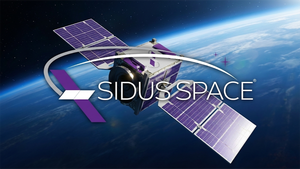Web-based CAPDash portal increases data transparency as Metropolitan implements Climate Action Plan
As part of its broad push to reduce its carbon footprint to address climate change, the Metropolitan Water District of Southern California today launched a new dashboard that allows the public to view the district’s progress in meeting ambitious goals to cut greenhouse gas emissions.
The web-based CAPDash tool features interactive charts and graphs that display Metropolitan’s GHG emissions data, including the sources of Metropolitan’s emissions, a snapshot of its emissions over time and progress in meeting its target to cut GHG emissions below 1990 levels by 2030 and reach carbon neutrality by 2045.
The data, to be updated annually, also categorizes the various strategies Metropolitan is employing through its Climate Action Plan to reduce GHG emissions from its operations, including the energy used to convey, store, treat and deliver water throughout its 5,200 square-mile service area.
“Our changing climate is a constant reminder that we must take bold action to reduce our emissions,” said Metropolitan board Chairwoman Gloria D. Gray. “We are accountable to the plans we put in place, and we encourage the public to engage with us in this process by looking at the data and how our efforts are translating into results.”
Metropolitan’s efforts are already paying off. According to the latest data available on CAPDash, Metropolitan emitted about 5.3 million metric tons of carbon dioxide equivalent (MTCO2e) in 2021, well below its budgeted carbon allowance of 9 million MTCO2e for that year. MTCO2e is a metric used to measure the amount of carbon dioxide and other gases that are being released into the atmosphere and contributing to climate change. As Metropolitan releases GHG emissions from operations, those emissions deplete the overall carbon budget allocated to meet the 2045 carbon neutrality goal.
The comprehensive Climate Action Plan, led by Metropolitan’s new Sustainability, Resiliency and Innovation Office, guides policy and planning decisions on operations, water resources, capital investments and conservation and resource programs. It also mitigates GHG impacts from Metropolitan’s operations and future capital projects under the California Environmental Quality Act.
“It takes a lot of energy to move and treat water,” said Metropolitan General Manager Adel Hagekhalil. “But by taking the actions outlined in our Climate Action Plan, including creating new local supplies, encouraging conservation and improving energy efficiency, we can significantly lower emissions and energy costs and improve our energy resiliency and independence.”
Some of the ways Metropolitan achieved lower emissions in 2021 included purchasing lower-carbon and carbon-free electricity where available, developing carbon-free energy generation, improving energy efficiency, continuing water conservation efforts, and developing local supplies.
The Metropolitan Water District of Southern California is a state-established cooperative that, along with its 26 cities and retail suppliers, provides water for 19 million people in six counties. The district imports water from the Colorado River and Northern California to supplement local supplies, and helps its members to develop increased water conservation, recycling, storage and other resource-management programs.
View source version on businesswire.com: https://www.businesswire.com/news/home/20221212005856/en/
Contacts
Maritza Fairfield, (213) 217-6853; (909) 816-7722, mobile
Rebecca Kimitch, (213) 217-6450; (202) 821-5253, mobile





